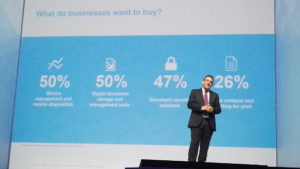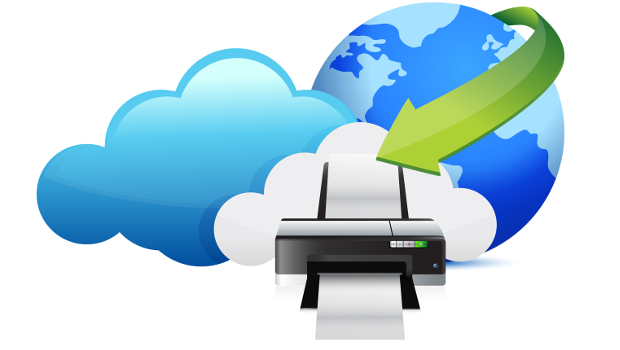However, Heys recognised that this type of digital transformation is not a perhaps as immediately transformative as it could be.
“Customers don’t boil the ocean,” said Heys, they digitise in small steps selectively, as they need it.

Customers don’t boil the ocean, they digitise in small steps selectively, as they need it, Mick Heys, IDC
Heys said that strategies for growth among the vendors would likely include providing a complete range of products services and solutions that are available immediately on acquisition. This is important as research has shown that more than a third (38%) of buyers reported the need to acquire software after a hardware purchase was an inhibitor in buying solutions at the outset. Misconceptions can creep in too, as 36% reported that solutions not being available from a manufacturer was an inhibitor, despite this not being the case.
Revenues will be increased by increasing the value in the offerings, maturing with customers as they grow. Heys also highlighted that this solution-based approach would require a higher level of IT skills throughout the delivery infrastructure, which may require an increase in partner numbers at the customer level.
With regard to the vendors, a Gartner Magic Quadrant from December puts Canon as a challenger, with Konica Minolta and Kyocera as visionaries, close to the leaders’ threshold. In the leaders’ quadrant are Ricoh, Lexmark, and HP Inc, but the furthest to the right in terms of completeness of vision and ability to deliver is Xerox.
“Leaders provide MPS and managed content services (MCS),” says Gartner, “to a wide range of customers, including the largest and most dispersed, so they must demonstrate a truly global reach. They must demonstrate not only the skills to deliver today’s MPS and MCS, but also the understanding, initiative and resources to prepare for tomorrow’s MPS and MCS. Leaders characteristically augment the full scope of MPS with a wide range of added-value services.”
As for emerging trends, both the OKI, IDC research and Fernandes concur that smart, multifunction devices are a gateway to automation and better business processes.
“Acting as on ramps and off ramps to the cloud,” says OKI, “smart MFPs extend the utilisation of the device from primarily printing and copying paper-based pages to a customisable digital transformation tool, enabling companies to capture, integrate and communicate information”

Acting as on ramps and off ramps to the cloud, smart MFPs extend the utilisation of the device from primarily printing and copying paper-based pages to a customisable digital transformation tool, enabling companies to capture, integrate and communicate information, OKI
Fernandes says that smart MFPs act as “an on-ramp to business process automation”.
With the key trends in transforming business processes, a bridge to automation and the cloud, and the promise of insights from opening up to analytics, smart organisations that are already on a path of digital transformation look set to be able to turn enterprise print into far more than a utility.
The increased security, orchestration and visibility provided by vendors also seems to support the trend towards a key function moving beyond a responsibility of buildings and services and into the realm of value-add IT function.






Subscribers 0
Fans 0
Followers 0
Followers